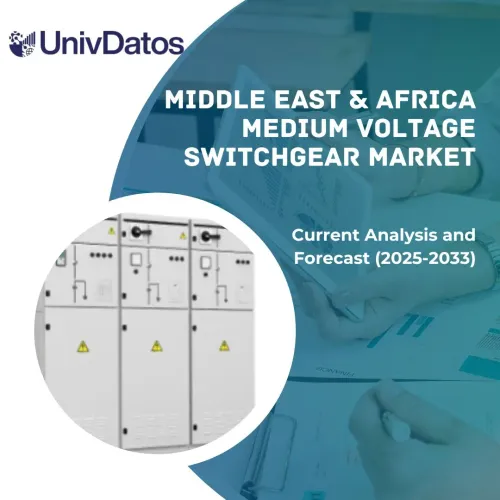- Home
- About Us
- Industry
- Services
- Reading
- Contact Us
Ammonia (NH3) Gas Sensor Market: Current Analysis and Forecast (2024-2032)
Emphasis on By Type (Floor-Mounted Type, and Portable Type); By Application (Agriculture, Commercial Building, Chemical, and Automotive), and Regions (North America (The US, Canada, Rest of North America), Europe (Germany, The UK, France, Italy, Spain, Rest of the Europe), Asia-pacific (China, Japan, India, Rest of the Asia-pacific), Rest of the World)
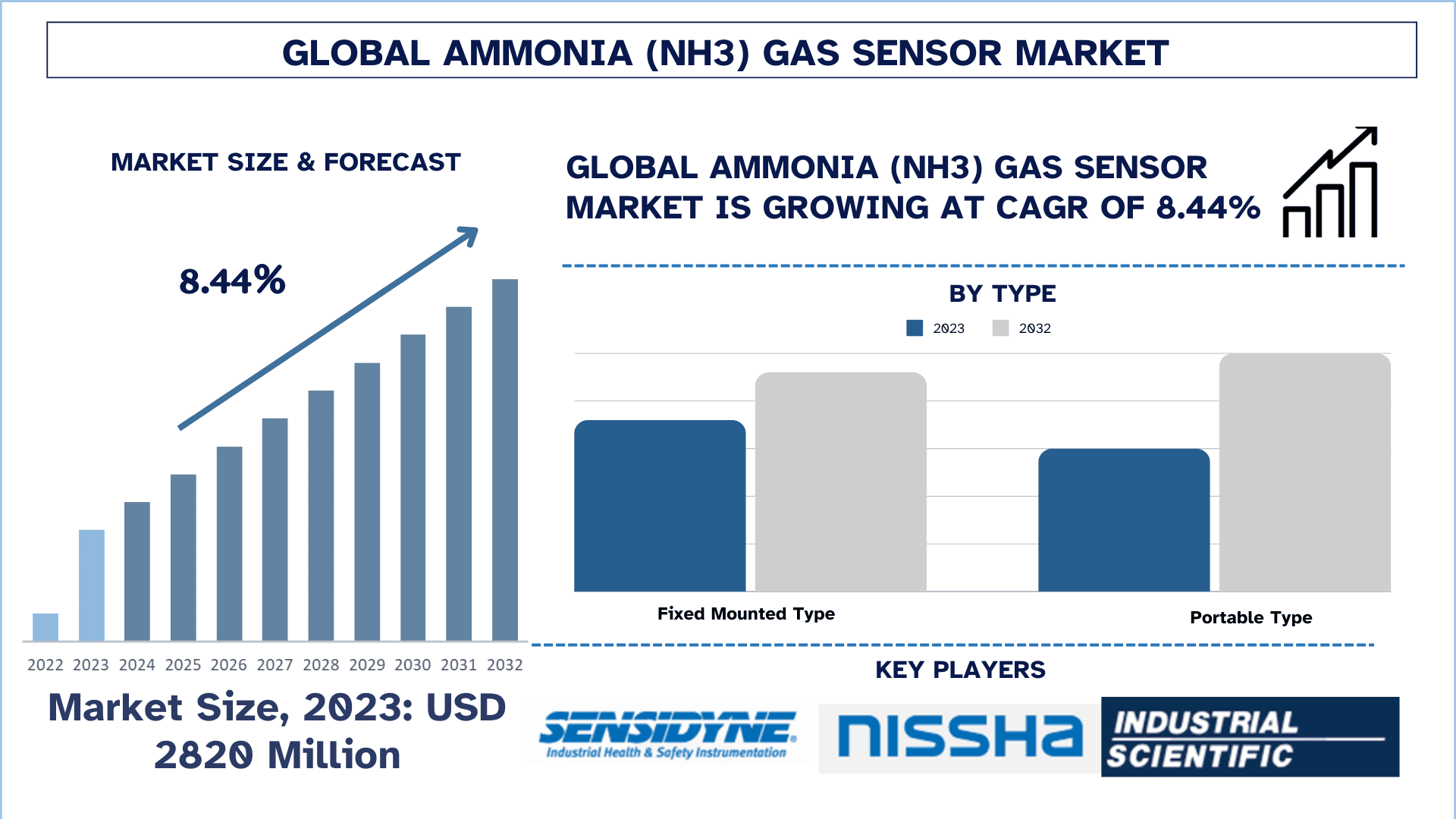
Global Ammonia (NH3) Gas Sensor Market Size & Forecast
The Global Ammonia (NH3) Gas Sensor market was valued at USD 2820 million in 2023 and is expected to grow at a strong CAGR of around 8.44% during the forecast period (2024-2032) owing to rising industrial application and environmental policies.
Global Ammonia (NH3) Gas Sensor Market Analysis
Ammonia (NH3) gas sensors are essential instruments for detecting and monitoring ammonia gas concentrations in such diverse fields as agriculture, chemical processing, refrigeration, and wastewater treatment. Ammonia is also used as a raw material for the production of fertilizers and industrial chemicals, and as a refrigerant; in high concentrations, it poses serious health safety issues for humans, animals, and the environment. These sensors play an important role in the safe handling of ammonia by detecting possible leaks and preventing potentially dangerous exposure. Types of ammonia gas sensors include fixed-mounted and portable sensors that employ a variety of technologies such as electrochemical, metal oxide semiconductor (MOS), and photoionization for precise real-time detection.
The Global Ammonia (NH3) Gas Sensor market was valued at USD 2820 million in 2023 and is expected to grow at a strong CAGR of around 8.44% during the forecast period (2024-2032). Over the past few years, the market for global ammonia (NH3) gas sensor has been growing tremendously based on increased industrial applications and the numerous safety requirements in the environments where ammonia is used or produced. Since ammonia is used relatively widely among different industries ranging from agriculture (purpose for fertilizers), refrigeration, wastewater treatment, and chemical manufacturing, the demand from industrial users for ammonia detection systems has increased massively. This trend will fuel the market on continuous grounds in such a way that the employees' safety and environmental concerns, as well as particular safety regulations, will be added. Advanced sensor technologies such as electrochemical and IoT-enabled sensors are enhancing every opportunity for the market's growth as industries increasingly adopt non-invasive safety precautions. Ammonia gas sensors are becoming part of safety and efficiency in industrial operations considering that many industries are adopting non-intrusive safety measures. Considering the changes the demand for Ammonia (NH3) Gas Sensor market would experience a rapid growth during 2024-2032.
Global Ammonia (NH3) Gas Sensor Market Trends
This section discusses the key market trends that are influencing the various segments of the Global Ammonia (NH3) Gas Sensor Market as identified by our team of research experts.
Increasing Industrial Applications
The increase in industrial applications for ammonia resources has been one of the major factors that have propelled the global ammonia gas sensor market. Ammonia is considered a vital component in most contemporary industries, including agriculture, chemical manufacture, refrigeration, and wastewater treatment. It is one of the major raw materials used in fertilizers in agriculture, which are significant determinants of crop yield. The chemical industry greatly depends upon ammonia to conduct varied chemical syntheses, while in refrigeration systems, it is used as a refrigerant, particularly in large-scale refrigeration for industrial cooling and food storage. Additionally, ammonia is also an integral component in most of the wastewater treatment plants, where it undertakes the removal of toxic nitrogen species.
With the rising usage of ammonia in the different sectors, the requirement for efficiently monitoring ammonia levels has exponentially grown to ensure optimal efficiency and safety in the respective workplaces. Ammonia gas leak detection sensor is an essential tool in preventing hazardous exposure to ammonia at a higher concentration, which is toxic to both humans and the environment. Real-time monitoring demand for ammonia levels is extremely high in industrial sites, whose health, safety, and environment regulations are stringent. As industrial applications of ammonia keep changing, so does the direct growth in demand for ammonia gas sensors in the market. Therefore, it will continue to project beyond the present-market developments in future scenarios.
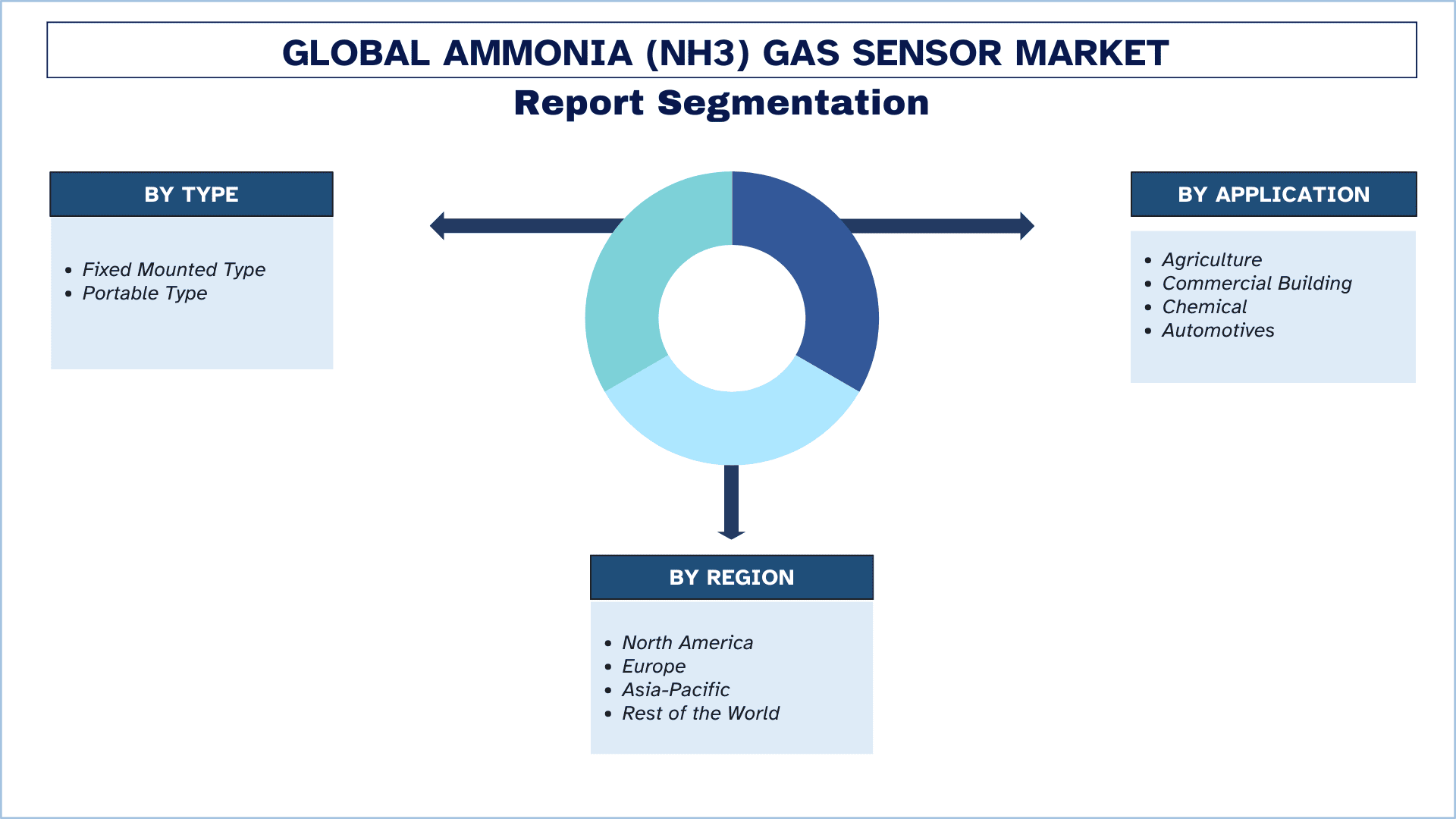
North America is Expected to Hold Major Market Share During Forecast Period
Considering the market size of the ammonia gas sensors in North America, this region has a considerable industrial and agricultural space using ammonia for different purposes. Chemical manufacturing, refrigeration, and wastewater treatment, as well as agriculture, mainly contribute to the production of fertilizers because they need ammonia sensors. In addition, the North American market is one of the strictest safety regulations' areas with respect to government standards and requirements to protect workers and the environment, therefore driving ammonia gas sensors further. The deployment of innovative technology, such as integration of IoT-enabled sensor technologies, improves the efficiency of these ammonia detection systems. It enhances real-time monitoring efficiency, predictive maintenance, and safety and operational efficiency. The North American market also benefits from matured infrastructure, a very high level of industrial automation and innovation in sensor technologies, making it a precursor among other regions with regards to global ammonia gas sensor development. Increased environmental sustainability is likely to trigger appropriate demand in future growth in this region.
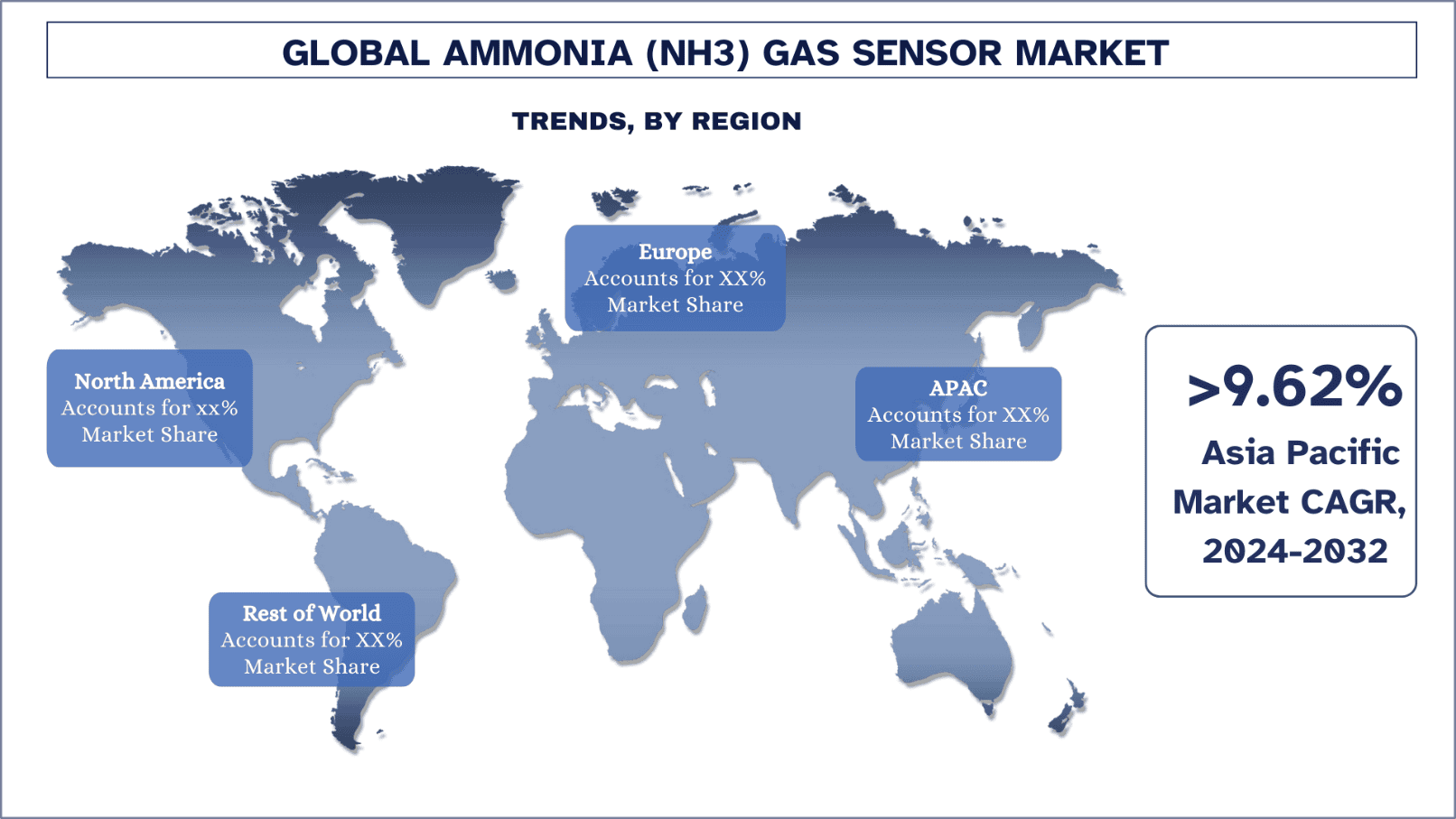
Global Ammonia (NH3) Gas Sensor Industry Overview
The Global Ammonia (NH3) Gas Sensor market is competitive and fragmented, with the presence of several global and international market players. The key players are adopting different growth strategies to enhance their market presence, such as partnerships, agreements, collaborations, new product launches, geographical expansions, and mergers and acquisitions. Some of the major players operating in the market Sensidyne, International Gas Detectors, Aeroqual, Industrial Scientific, Nissha, Winsen, Toshniwal Sensing Devices Pvt Ltd., Ahlborn, Ensinger GmbH, and EC Sense.
Global Ammonia (NH3) Gas Sensor Market News
In 2024, RMIT University, the University of Melbourne and the ARC Centre of Excellence for Transformative Meta-Optical Systems (TMOS) successfully developed a nose like ammonia gas sensor of smaller size.
Global Ammonia (NH3) Gas Sensor Market Report Coverage
Report Attribute | Details |
Base year | 2023 |
Forecast period | 2024-2032 |
Growth momentum | Accelerate at a CAGR of 8.44% |
Market size 2023 | USD 2820 million |
Regional analysis | North America, Europe, Asia-pacific, Rest of the World |
Major countries | The US, Canada, The UK, France, Germany, Italy, Spain, China, Japan, India |
Companies profiled | Sensidyne, International Gas Detectors, Aeroqual, Industrial Scientific, Nissha, Winsen, Toshniwal Sensing Devices Pvt Ltd., Ahlborn, Ensinger GmbH, and EC Sense. |
Report Scope | Market Trends, Drivers, and Restraints; Revenue Estimation and Forecast; Segmentation Analysis; Demand and Supply Side Analysis; Competitive Landscape; Company Profiling |
Segments Covered | By Type, By Application, By Region/Country |
Reasons to buy this report:
The study includes market sizing and forecasting analysis validated by authenticated key industry experts.
The report presents a quick review of overall industry performance at one glance.
The report covers an in-depth analysis of prominent industry peers with a primary focus on key business financials, product portfolios, expansion strategies, and recent developments.
Detailed examination of drivers, restraints, key trends, and opportunities prevailing in the industry.
The study comprehensively covers the market across different segments.
Deep dive regional level analysis of the industry.
Customization Options:
The Global Ammonia (NH3) Gas Sensor market can further be customized as per the requirement or any other market segment. Besides this, UMI understands that you may have your own business needs; hence, feel free to connect with us to get a report that completely suits your requirements.
Table of Content
Research Methodology for the Global Ammonia (NH3) Gas Sensor Market Analysis (2024-2032)
Analyzing the historical market, estimating the current market, and forecasting the future market of the Global Ammonia (NH3) Gas Sensor market were the three major steps undertaken to create and analyze the adoption of Global Ammonia (NH3) Gas Sensor in major regions globally. Exhaustive secondary research was conducted to collect the historical market numbers and estimate the current market size. Secondly, to validate these insights, numerous findings and assumptions were taken into consideration. Moreover, exhaustive primary interviews were also conducted with industry experts across the value chain of the Global Ammonia (NH3) Gas Sensor market. Post assumption and validation of market numbers through primary interviews, we employed a top-down/bottom-up approach to forecasting the complete market size. Thereafter, market breakdown and data triangulation methods were adopted to estimate and analyze the market size of segments and sub-segments of the industry. Detailed methodology is explained below:
Analysis of Historical Market Size
Step 1: In-Depth Study of Secondary Sources:
A detailed secondary study was conducted to obtain the historical market size of the Global Ammonia (NH3) Gas Sensor market through company internal sources such as annual reports & financial statements, performance presentations, press releases, etc., and external sources including journals, news & articles, government publications, competitor publications, sector reports, third-party database, and other credible publications.
Step 2: Market Segmentation:
After obtaining the historical market size of the Global Ammonia (NH3) Gas Sensor market, we conducted a detailed secondary analysis to gather historical market insights and share for different segments & sub-segments for major regions. Major segments are included in the report as by Type and Application. Further regional/country-level analyses were conducted to evaluate the overall adoption of testing models in that region.
Step 3: Factor Analysis:
After acquiring the historical market size of different segments and sub-segments, we conducted a detailed factor analysis to estimate the current market size of the Global Ammonia (NH3) Gas Sensor market. Further, we conducted factor analysis using dependent and independent variables such as by Type and by Application in the Global Ammonia (NH3) Gas Sensor market. A thorough analysis was conducted for demand and supply-side scenarios considering top partnerships, mergers and acquisitions, business expansion, and product launches in the Global Ammonia (NH3) Gas Sensor market sector across the globe.
Current Market Size Estimate & Forecast
Current Market Sizing: Based on actionable insights from the above 3 steps, we arrived at the current market size, key players in the Global Ammonia (NH3) Gas Sensor market, and market shares of the segments. All the required percentage shares split and market breakdowns were determined using the above-mentioned secondary approach and verified through primary interviews.
Estimation & Forecasting: For market estimation and forecast, weights were assigned to different factors, including drivers & trends, restraints, and opportunities available for the stakeholders. After analyzing these factors, relevant forecasting techniques, i.e., the top-down/bottom-up approach, were applied to arrive at the market forecast for 2032 for different segments and sub-segments across the major markets globally. The research methodology adopted to estimate the market size encompasses:
The industry’s market size, in terms of revenue (USD) and the adoption rate of the Global Ammonia (NH3) Gas Sensor market across the major markets domestically
All percentage shares, splits, and breakdowns of market segments and sub-segments
Key players in the Global Ammonia (NH3) Gas Sensor market in terms of products offered. Also, the growth strategies adopted by these players to compete in the fast-growing market.
Market Size and Share Validation
Primary Research: In-depth interviews were conducted with the Key Opinion Leaders (KOLs), including Top Level Executives (CXO/VPs, Sales Head, Marketing Head, Operational Head, Regional Head, Country Head, etc.) across major regions. Primary findings were then summarized, and statistical analysis was performed to prove the stated hypothesis. Inputs from primary research were consolidated with secondary findings, hence turning information into actionable insights.
Split of Primary Participants in Different Regions
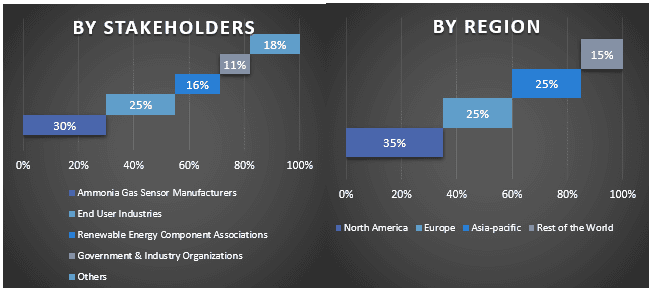
Market Engineering
The data triangulation technique was employed to complete the overall market estimation and to arrive at precise statistical numbers for each segment and sub-segment of the Global Ammonia (NH3) Gas Sensor market. Data was split into several segments and sub-segments after studying various parameters and trends by Type and by Application in the Global Ammonia (NH3) Gas Sensor market.
The main objective of the Global Ammonia (NH3) Gas Sensor Market Study
The current & future market trends of the Global Ammonia (NH3) Gas Sensor market were pinpointed in the study. Investors can gain strategic insights to base their discretion for investments on the qualitative and quantitative analysis performed in the study. Current and future market trends determined the overall attractiveness of the market at a regional level, providing a platform for the industrial participant to exploit the untapped market to benefit from a first-mover advantage. Other quantitative goals of the studies include:
Analyze the current and forecast market size of the Global Ammonia (NH3) Gas Sensor market in terms of value (USD). Also, analyze the current and forecast market size of different segments and sub-segments.
Segments in the study include areas by Type and by Application.
Define and analyze the regulatory framework for global Ammonia (NH3) Gas Sensor industry.
Analyze the value chain involved with the presence of various intermediaries, along with analyzing customer and competitor behaviors of the industry.
Analyze the current and forecast market size of the Global Ammonia (NH3) Gas Sensor market for the major regions.
Major countries of regions studied in the report include North America (The US, Canada, and Rest of North America), Europe (The UK, France, Germany, Italy, Spain, Rest of Europe), Asia-pacific (China, Japan, India, Rest of the Asia-pacific), Rest of the World
Company profiles of the Global Ammonia (NH3) Gas Sensor market and the growth strategies adopted by the market players to sustain in the fast-growing market.
Deep dive regional level analysis of the industry
Frequently Asked Questions FAQs
Q1: What is the current market size and growth potential of the Global Ammonia (NH3) Gas Sensor market?
The Global Ammonia (NH3) Gas Sensor market was valued at USD 2820 Million in 2023 and is expected to grow at a CAGR of 8.44% during the forecast period (2024-2032).
Q2: What is the driving factor for the growth of the Global Ammonia (NH3) Gas Sensor market?
Increasing industrial application and strict environmental government policies are some of the key driving factors for growth.
Q3: Which segment has the largest share of the Global Ammonia (NH3) Gas Sensor market by type?
The Fixed-Mounted Type segment has the largest share of the Global Ammonia (NH3) Gas Sensor market by type.
Q4: Which region will dominate the Global Ammonia (NH3) Gas Sensor market?
North America is expected to dominate the market during the forecast period.
Related Reports
Customers who bought this item also bought






